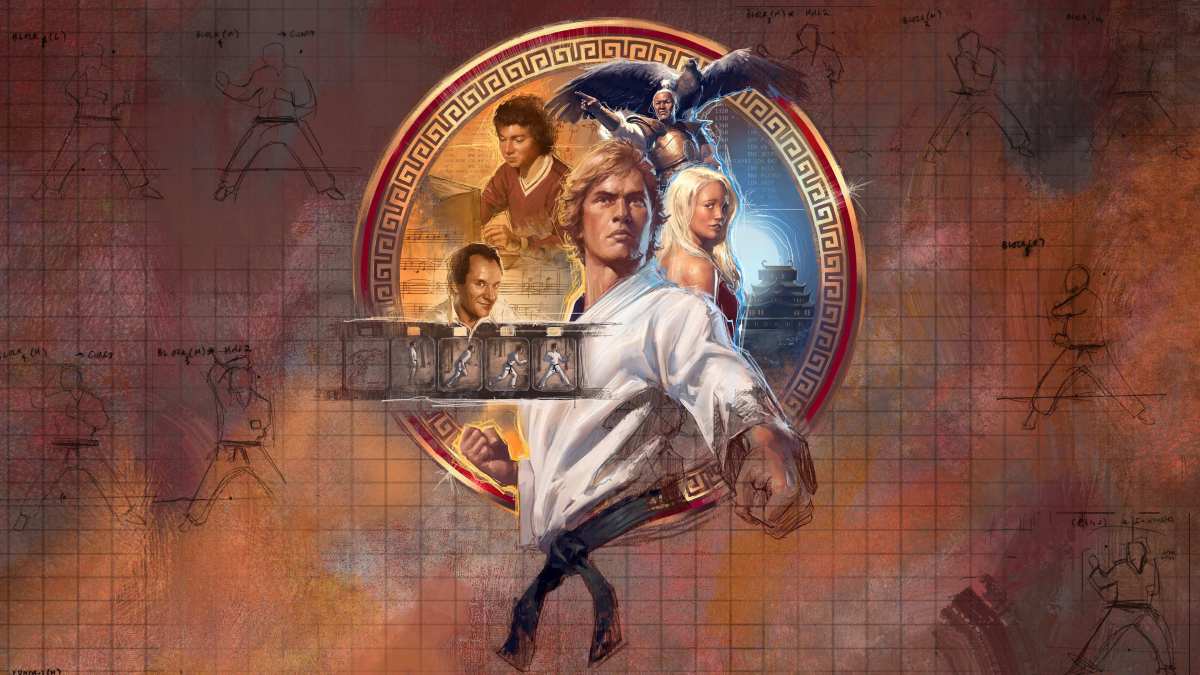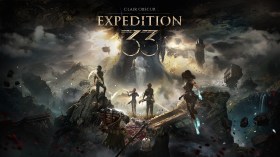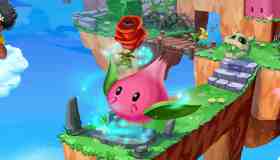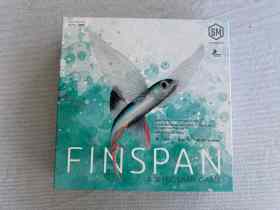The Making of Karateka plays host to a loving video game remaster, a documentary, and a comprehensive, interactive historical archive that details the creation of a seminal work in video game history. Unique in composition, meticulous and compelling in execution, there hasn’t really been anything quite like The Making of Karateka before. But there certainly needs to be far more like it in future.
Karateka itself was a groundbreaking action game, a critical and commercial success developed solo in the early 1980s by then-college student Jordan Mechner. Mechner would go on to create additional landmark games like Prince of Persia, Prince of Persia 2, The Last Express, and Prince of Persia: The Sands of Time.
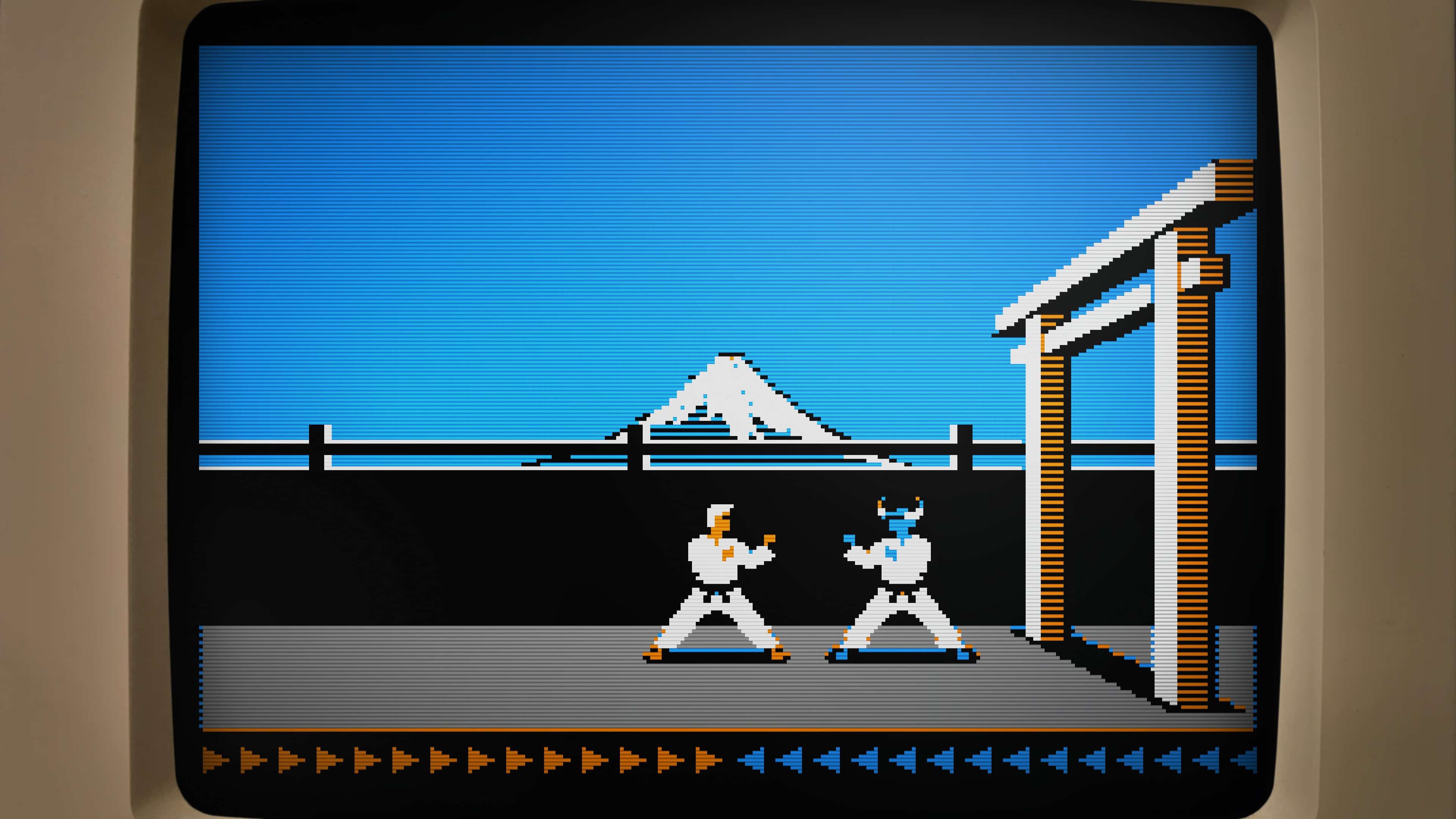
Karateka was one of the first cinematic video games, one that more clearly took obvious inspiration from traditional film and animation, featuring cutscenes, in-game cutaways, and a clear ending that went against the never-ending arcade experiences that dominated at the time. It pioneered techniques like rotoscoped animation – the use of recorded live-action footage as the basis for animation work. It was one of the first instances of motion capture work for video games, and Mechner would continue to champion this technique in Prince of Persia and The Last Express.
Read: The Last Express is as mesmerising and relevant as ever, 25 years later
Created and curated by the game preservation-focused studio Digital Eclipse, The Making of Karateka features a blockbuster museum exhibition’s worth of displays (and then some) concerning the fascinating story behind the game’s creation in an intimate and approachable format.
The cultural value of this foray is immense. As someone who has nostalgia for playing Karateka on a school friend’s
Arranged into five chronological chapters with a clear narrative throughline, The Making of Karateka comprises three different categories of displays, strewn across a slick and clear interactive timeline that places each individual piece at a point in Mechner’s life.
The first category consists of short, documentary vignettes that feature the talking heads of those involved in Karateka‘s development to provide first-hand insight, as well as other industry experts who provide some greater historical context. Mechner and his father feature heavily for first-hand recollection, as do figures like Doug Carlston, the former president of Broderbund Software who corresponded with and eventually signed Mechner, and programmer Veda Cook, who worked on porting the game to several systems, and worked closely with Mechner on other projects.
These are compelling, focused snippets of information themed around recalling specific sentiments and techniques, but more importantly to the overall effectiveness of The Making of Karateka, these vignettes are bite-sized and get to the point quickly, encouraging you to spend more time exploring the behind-the-scenes materials and documents talked about for yourself, and at your own pace.
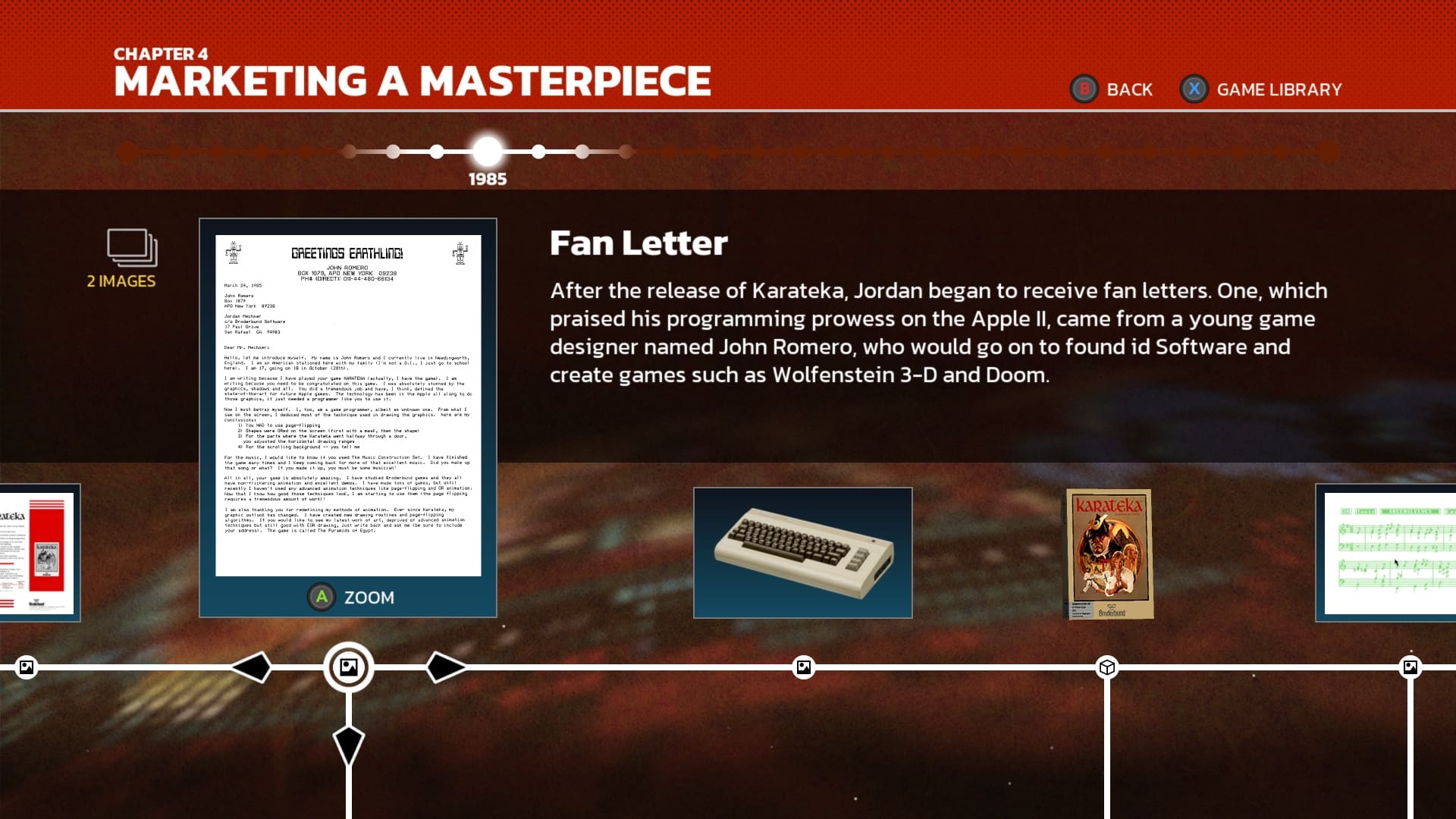
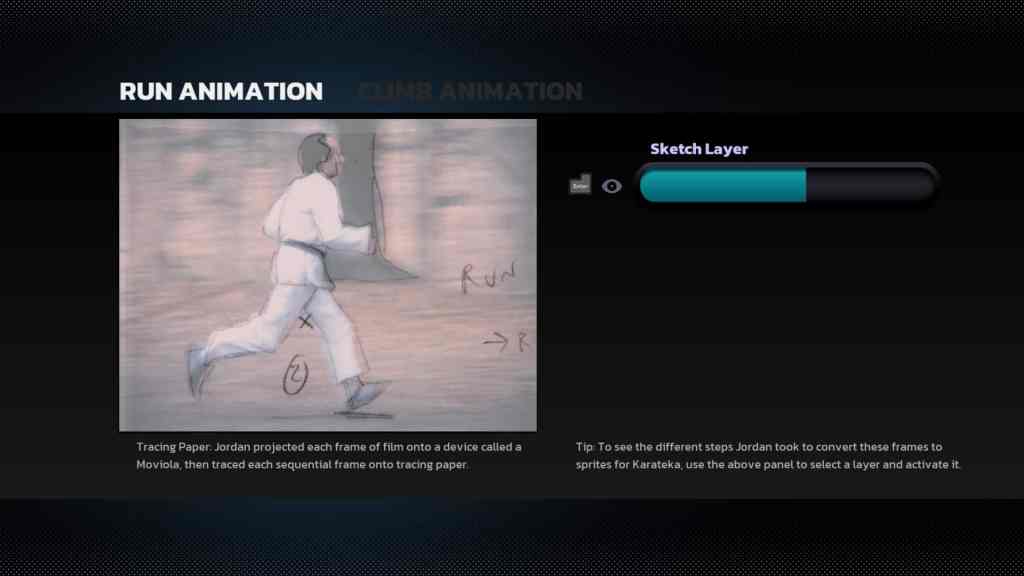
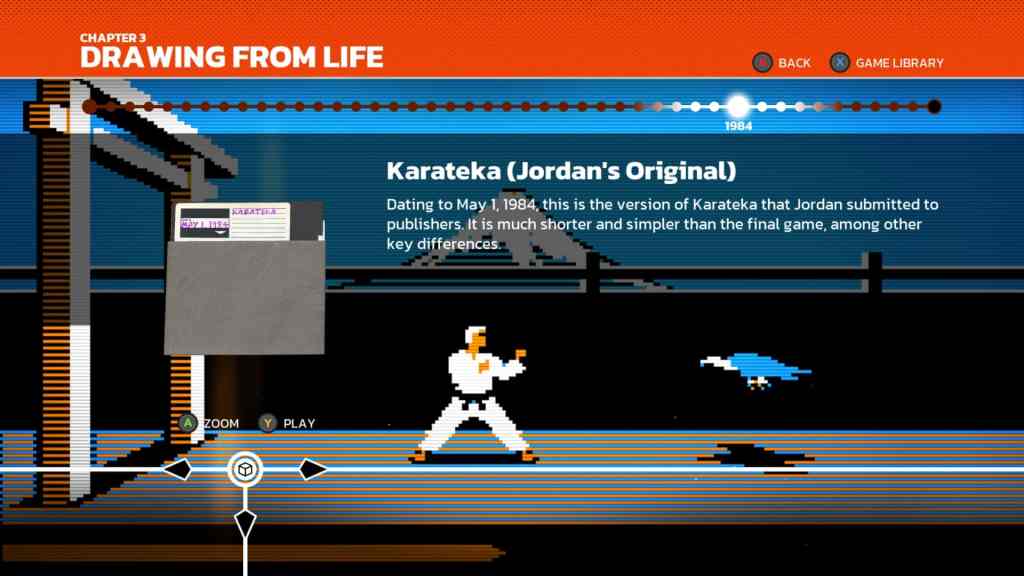
These exhaustive, behind-the-scenes materials make up the second major category of components in The Making of Karateka, and they are a joy to peruse. From Mechner’s candid teenage journal entries, to copious sketches, handwritten notes, and working documents for his games, to the original Super-8 film reel that served as reference footage for Mechner’s rotoscoping work, featuring his father and sister. A series of letters that document Mechner’s long, back-and-forth correspondence, iterations, and rejections with publishers are also fascinating, especially as they’re contextualised.
But it’s the final category of components, the playables, that exemplify why The Making of Karateka works so well. Having a compelling account of the creation of interactive work is one thing, but having that work’s primordial incarnations and evolutions be interactive as well feels like both an obvious and enlightened decision here. This is the way it should always be.
The Making of Karateka not only comes with different, full releases of Karateka – for the
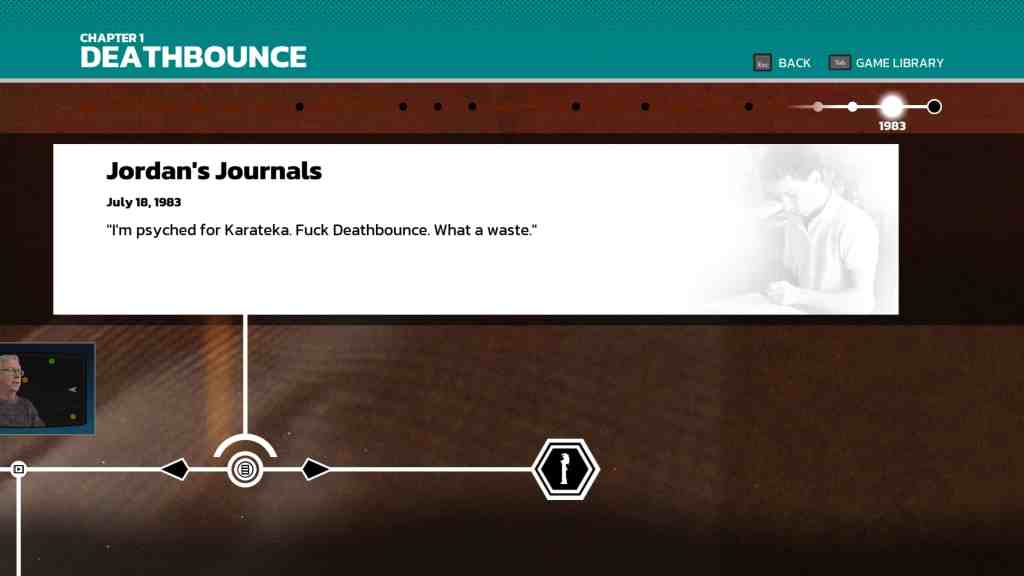
Like the rest of the materials, each is accompanied by curatorial commentary that draws your attention to distinct points of interest and differences that help you contextualise them in history, and they’re displayed both as part of the interactive timeline, as well as a separate collection for easier access. Not only that, The Making of Karateka also provides optional video playthroughs of all the prototypes and games, which pleasingly removes the barriers that can sometimes come with trying to play dated and unoptimised titles.
The cherry on top is that as well as Mechner’s prototypes, The Making of Karateka also features brand-new, modern remasters of both Karateka and Deathbounce developed by the Digital Eclipse team themselves – Karateka Remastered and Deathbounce: Remastered – which are remarkable in their own right.
These interpretations stay very faithful to Mechner’s original work and design documents, with light but meaningful refinements in audio and visual presentation. They benefit greatly from improvements afforded by modern computing, such as much smoother animation, and more responsive controls. They also notably introduce some documented ideas that Mechner had in mind for the original Karateka, but wasn’t able to implement due to technological constraints.
Karateka Remastered revitalises the original game with a ‘how you think you remember it’ approach, as professed by Digital Eclipse president Mike Mika in the optional developer’s commentary, which is in itself a very insightful inclusion.

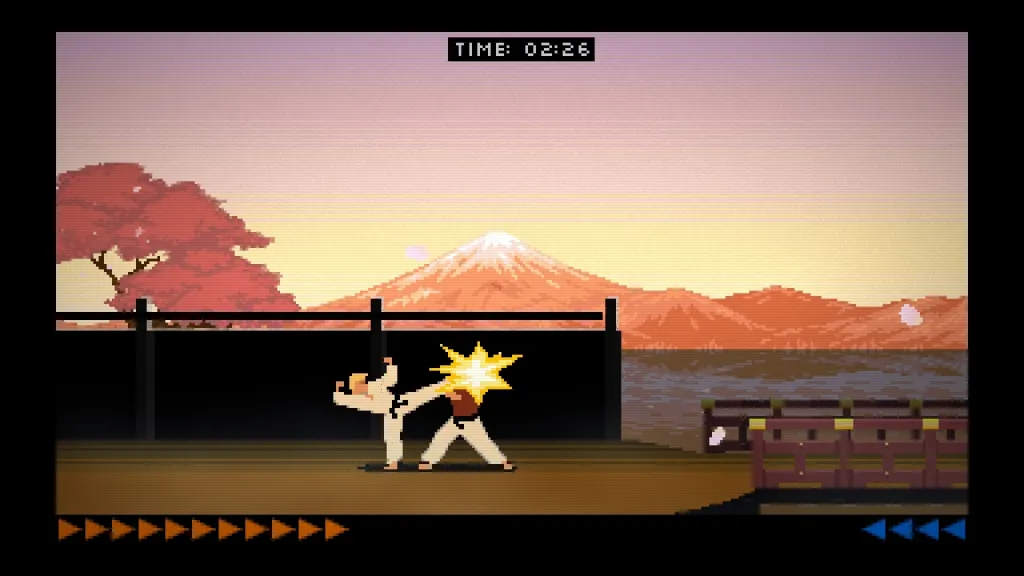
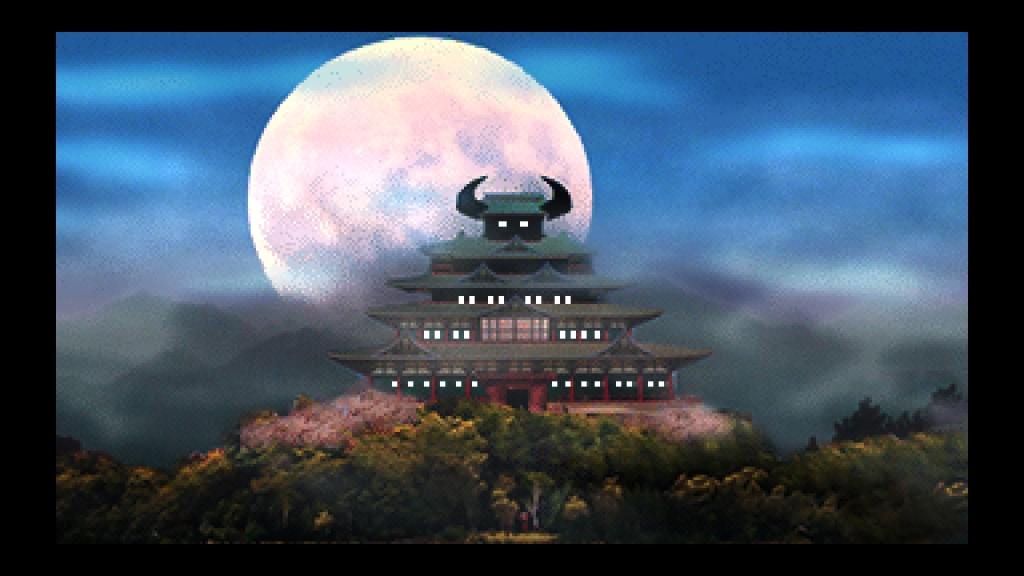
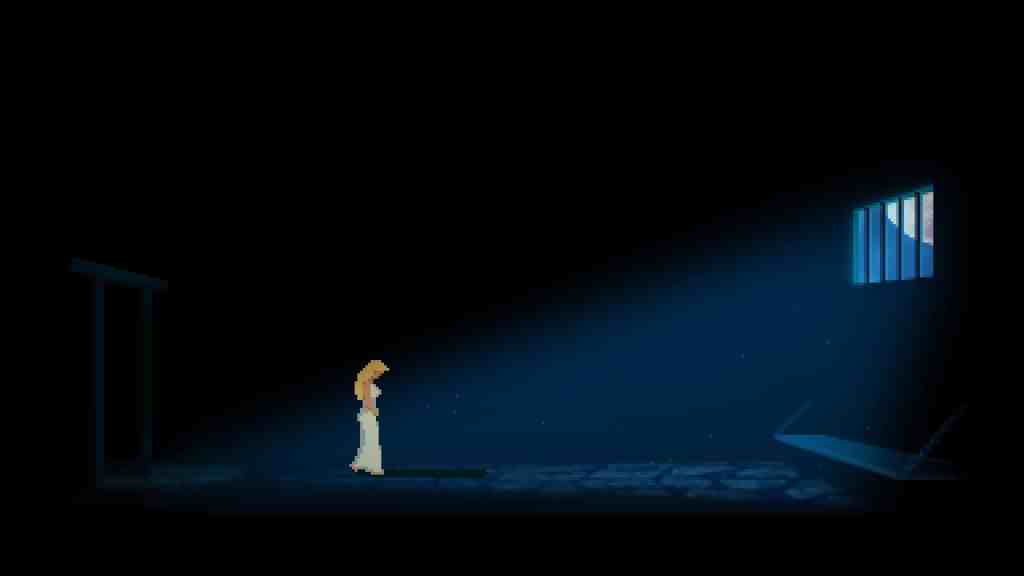
With the core design and fundamentals of Karateka refreshed in this new light, Karateka Remastered paints an even clearer picture of how strong Mechner’s concept always was. Artful and impactful, its considered structure, design decisions, and mechanics still have an impact. It’s an action game that rewards patience and perception (and for fighting game enthusiasts, it also teaches great spacing habits).
As for The Making of Karateka as a whole, it’s everything something like this should be: A painstaking historical record of inspired creation that is engrossing in its sheer detail, and arranged in such a way that it tells a fascinating, approachable story that inspires you to know more, and do more.
Five Stars: ★★★★★
The Making of Karateka
Platforms: PC,
Developer: Digital Eclipse
Publisher: Digital Eclipse
Release Date: 30 August 2023
The PC version of The Making of Karateka was provided and played for the purposes of this review. GamesHub reviews are scored on a 5-point rating scale.
